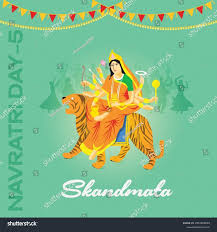Celebrating Navratri Day 5: Traditions and Significance

Importance of Navratri Day 5
Navratri, the nine-night festival dedicated to Goddess Durga, holds immense cultural and religious significance in India. Each of the nine days is dedicated to different forms of the goddess, with Day 5 representing the worship of Goddess Skandamata. This day stands out for its devotion and rituals that pay homage to the nurturing aspect of femininity.
Events and Traditions
On Navratri Day 5, devotees engage in specific rituals and prayers to seek the blessings of Goddess Skandamata, who is believed to bestow wisdom, strength, and prosperity. Temples and homes are adorned with vibrant decorations, while devotees often wear traditional attire, reflecting the festive spirit. Many communities organize special devotional songs, dances, and cultural programs that showcase regional diversity in worship practices.
On this day, it is common for worshippers to offer bananas, which are sacred and symbolically represent fertility and abundance. Chanting of the Skandamata Ashtakshara Mantra is also prevalent, and devotees meditate on the virtues of the goddess, which include patience and nurturing, reflecting the qualities of a mother.
Conclusion
As we celebrate Navratri Day 5, it is a time for introspection, faith, and community spirit. The festival not only connects people through shared beliefs but also promotes a sense of unity and cultural heritage. With the ongoing celebrations, expectations are high for the remaining days, leading to a grand culmination on Vijaya Dashami. For devotees, this festival is a reminder of strength, resilience, and the importance of feminine energy in our lives. The essence of Navratri continues to be a beacon of hope and inspiration, guiding many toward spiritual growth and personal empowerment.









